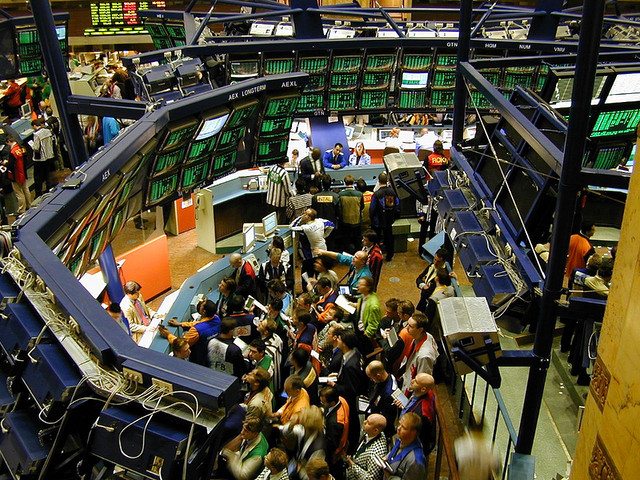The three main themes of the New Year are monetary policy, monetary policy and monetary policy. Far, far down the list is the question of the cyclical trend and – oh yes, there was one more thing, after the political uncertainties that are popping up everywhere.
First, monetary policy: the Bank of Japan is continuing its policy of monetary flooding. Although this policy has not brought about the desired results over more than 20 years, this is the only possible outcome of the re-election of Prime Minister Abe.
Second, monetary policy: over the Christmas holidays, another “Big Bertha” (“LTRO”)1 from the European Central Bank (ECB) ran out and repayments of the three-year tender of EUR 270 billion are due by February, which will shrink the central bank balance sheet and make the monetary guardian sweat, because the volume of the new conditional long-term tender fell short of expectations. The resulting balance sheet shrinkage is grist to the mill of proponents of extensive purchases of government bonds. This is all the truer as consumer prices are expected to go into reverse in future on the decline in the oil price. Things will not become interesting until 14 January, when the European Court of Justice, on the initiative of the German Federal Constitutional Court, announces its judgment on the OMT(Outright Monetary Transactions) purchases.
Third, monetary policy: the US Federal Reserve (Fed) is expected to introduce its first rate hike over the summer, but it is making every effort to protect the market as much as possible during this implementation.
For investors, this means: none of this does any good. Once the price of money is distorted, the result is misallocation of capital, and even macro- prudential measures only help under certain conditions. Some pay for this with negative real interest rates, others battle with valuations that increase with risk, with a tendency towards asset price bubbles. In addition, the focus is moving to the economy. We still do not expect deflation. The latest data from the US support that view. Furthermore the latest European consumer price indices need to be seen in the light of the oil price.
What remains is a set of geo-political uncertainties. The Russia-Ukraine conflict continues to smolder and shows that the laws of economics cannot be overridden, as indicated by the Ruble. Increased risk demands higher risk premiums. In Greece, new elections at end-January could put the entire reform process up for debate. One item that few have on the agenda: in May there will be elections in the United Kingdom and critics of Europe see an opportunity.
There remains just one thing: use volatility for active investment or make use of multi asset solutions.
Opinion Column by Hans-Jörg Naumer, Global Head of Capital Markets & Thematic Research, Allianz GI




 For Fórmate a Fondo
For Fórmate a Fondo